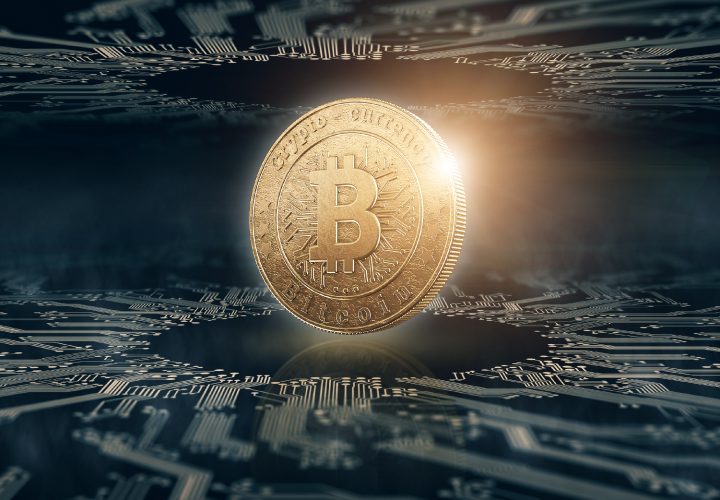Introduction
The advent of digital currencies, particularly cryptocurrencies such as Bitcoin, Ethereum, and stablecoins, has raised fundamental questions about the future of money and the broader financial system. Over the past decade, digital currencies have evolved from a niche interest in the tech and financial communities to a global phenomenon, with central banks, commercial banks, and governments now grappling with their implications. The rise of digital currencies, both decentralized and state-backed, represents a major shift in how we think about money, transactions, and financial infrastructure.
As the world experiences an increasing interest in digital currencies, the debate has intensified around their potential impact on traditional financial institutions, markets, and regulatory frameworks. Will digital currencies be a disruptive force that reshapes global finance? Or will they simply coexist with traditional financial systems, complementing rather than replacing the existing infrastructure?
This article will explore the profound implications of the rise of digital currencies on the traditional financial system, focusing on several key areas: monetary policy, banking and payments infrastructure, financial markets, and regulatory challenges.
1. The Rise of Digital Currencies: An Overview
a. Cryptocurrencies and Central Bank Digital Currencies (CBDCs)
There are two main categories of digital currencies currently shaping the financial landscape: cryptocurrencies and central bank digital currencies (CBDCs).
- Cryptocurrencies: Cryptocurrencies are decentralized digital assets built on blockchain technology. The most well-known examples are Bitcoin, Ethereum, and Binance Coin. These assets are typically not controlled by any central authority and rely on distributed networks to verify and record transactions. The decentralized nature of cryptocurrencies allows for peer-to-peer transactions without the need for intermediaries, such as banks or payment processors.
- Central Bank Digital Currencies (CBDCs): In contrast, CBDCs are state-backed digital currencies issued by central banks. Unlike cryptocurrencies, CBDCs are centralized and regulated by the government. They are designed to represent the digital version of a country’s fiat currency. China’s Digital Yuan and the Digital Dollar Project in the U.S. are key examples of CBDC initiatives that are being developed and piloted in several countries. CBDCs aim to modernize the financial system, improve payment efficiency, and ensure greater control over monetary policy.
b. The Global Digital Currency Landscape
The growing popularity of digital currencies has sparked widespread interest across the globe. Cryptocurrencies are being used not only as speculative investment assets but also as mediums of exchange in an increasing number of transactions, especially in regions with unstable fiat currencies or limited access to traditional banking systems.
At the same time, central banks around the world are exploring or already piloting CBDCs to enhance monetary policy, boost financial inclusion, and streamline payments. China’s Digital Yuan, for example, is already undergoing trials and is expected to be rolled out nationally in the coming years, positioning China as a leader in the development of digital currencies.
2. The Impact of Digital Currencies on Traditional Banking and Payments Systems
One of the most profound effects of the rise of digital currencies is their potential to disintermediate traditional financial systems, particularly the role of banks and payment processors. The traditional banking system relies on intermediaries to facilitate transactions, store value, and manage monetary policy. Digital currencies, however, challenge this structure by allowing for peer-to-peer transactions without the need for traditional intermediaries.
a. Disintermediation of Banks
The decentralized nature of cryptocurrencies could lead to disintermediation of banks in certain aspects of their operations. For example, cryptocurrencies allow individuals and businesses to transfer value across borders without the need for a bank or a financial intermediary, bypassing costly transaction fees and delays typically associated with traditional cross-border payments. Bitcoin, for instance, allows for instant, low-cost transactions between parties located in different parts of the world, without the need for central clearinghouses or financial institutions.
For banks, this means losing their role as intermediaries in certain financial transactions. If widespread adoption of cryptocurrencies and decentralized finance (DeFi) applications continues, traditional banks may face increased competition and disruption, forcing them to rethink their business models and integrate new technologies into their operations.
b. The Transformation of Payment Systems
Digital currencies, especially CBDCs, could revolutionize payment systems by offering a faster, cheaper, and more efficient alternative to existing systems. CBDCs allow for instant settlement of transactions, eliminating the delays associated with traditional payment processing systems like SWIFT or Visa/Mastercard.
For example, CBDCs can enable real-time domestic and international payments with minimal fees. Additionally, they can facilitate financial inclusion by providing access to digital currency services for the unbanked population, particularly in developing economies where traditional banking infrastructure is sparse.
Moreover, the use of blockchain technology in cryptocurrency systems offers increased transparency and security, which can be advantageous for tracking transactions and preventing fraud.
3. The Challenge of Monetary Policy and Control
Digital currencies, particularly decentralized cryptocurrencies, present a significant challenge to monetary policy. Central banks traditionally use tools like interest rates, open market operations, and reserve requirements to influence inflation, control economic growth, and stabilize the financial system. However, the rise of cryptocurrencies and other digital assets outside the purview of central banks complicates this process.
a. Loss of Monetary Control
Cryptocurrencies are not controlled by any central authority, and as such, they pose a challenge to central banks’ ability to influence the money supply and interest rates. For example, if a significant portion of money flows into decentralized assets like Bitcoin, it could reduce the effectiveness of traditional monetary policy tools.
Additionally, widespread adoption of cryptocurrencies could lead to currency substitution (also known as “dollarization”), where individuals and businesses prefer to hold and transact in digital assets rather than in fiat currencies. This could reduce the demand for the national currency and limit the central bank’s ability to regulate the economy through its standard monetary policy tools.
b. Central Bank Digital Currencies (CBDCs) as a Countermeasure
In response to the growing influence of decentralized digital currencies, central banks have begun exploring CBDCs. CBDCs provide governments with an opportunity to retain control over their monetary systems while offering the benefits of digital currency. By issuing their own digital currencies, central banks can maintain the integrity of their currency and continue to exercise control over monetary policy.
Furthermore, CBDCs allow central banks to monitor and regulate digital transactions in real time, helping to prevent financial instability and illicit activities such as money laundering or tax evasion. CBDCs can also help central banks modernize payments systems and make them more efficient, ensuring that they remain competitive in an increasingly digital economy.
4. Regulatory and Legal Challenges
The rise of digital currencies also presents a significant regulatory challenge. Cryptocurrencies, due to their decentralized and pseudonymous nature, have raised concerns about fraud, money laundering, terrorist financing, and other illegal activities. Governments and regulators are struggling to adapt their existing legal frameworks to address the growing prevalence of digital assets.
a. The Need for Clear Regulations
In order to balance innovation with risk mitigation, clear and comprehensive regulations need to be established for cryptocurrencies and digital currencies. These regulations must address a wide range of concerns, including:
- Consumer protection: Ensuring that investors and users of digital currencies are protected from fraud, scams, and theft.
- Anti-money laundering (AML) and counter-terrorist financing (CTF): Implementing measures to prevent cryptocurrencies from being used for illicit purposes.
- Tax compliance: Establishing guidelines for how digital currency transactions are taxed and reported.
- Market manipulation: Preventing market manipulation and protecting investors in volatile digital currency markets.
b. International Coordination
As digital currencies are borderless, effective regulation will require international coordination. Governments and financial regulators must work together to develop consistent standards and policies that can address cross-border challenges posed by cryptocurrencies. Without a coordinated approach, there is a risk that digital currencies could be used to circumvent national laws, especially in countries with weak regulatory oversight.

5. Long-Term Implications for the Financial System
The long-term implications of digital currencies on the financial system are still unfolding, but several key trends are already emerging:
- Increased Efficiency and Cost Reduction: Digital currencies, particularly CBDCs and cryptocurrencies, have the potential to significantly reduce transaction costs and increase the efficiency of the financial system. Faster, cheaper payments could revolutionize both domestic and international commerce.
- Decentralized Finance (DeFi): The rise of decentralized finance platforms is challenging traditional financial intermediaries like banks and insurance companies. DeFi platforms allow for peer-to-peer lending, borrowing, and trading of digital assets, all without the need for traditional financial institutions.
- Shift in Financial Power: If cryptocurrencies and CBDCs continue to grow, they may lead to a shift in financial power away from traditional financial institutions and toward decentralized networks. This could democratize access to financial services and create a more inclusive global financial system.
- Evolution of Financial Infrastructure: Central banks and traditional financial institutions will need to evolve their infrastructure to accommodate the growing demand for digital currencies. This includes integrating blockchain technology, improving cybersecurity, and developing cross-border payment systems that are compatible with digital currencies.
Conclusion
The rise of digital currencies is having a profound impact on the traditional financial system, presenting both opportunities and challenges. While cryptocurrencies offer decentralized alternatives to traditional banking, central banks are increasingly embracing CBDCs to retain control over their monetary systems and adapt to the changing landscape.
As the world shifts towards a more digital and decentralized financial ecosystem, it is clear that traditional financial institutions, regulators, and policymakers must adapt to new technological realities. The future of finance will likely be a hybrid system that combines the benefits of digital currencies with the stability and regulatory oversight of the traditional financial system.
In the long term, digital currencies may drive greater financial inclusion, reduce transaction costs, and improve the efficiency of payments systems. However, their full impact will depend on how well governments, central banks, and regulators navigate the complexities of this digital revolution. As digital currencies continue to evolve, so too will the financial systems and institutions that shape our global economy.
















































